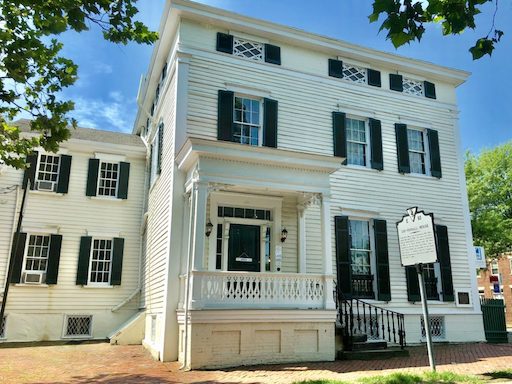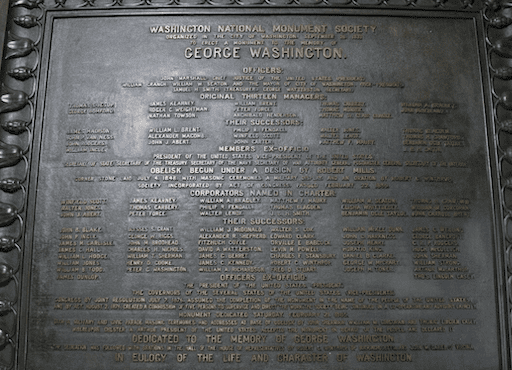The Lee-Fendall House Legacy
Philip Richard Fendall II, born on December 18, 1794, and passing on February 16, 1868, was a significant figure in American history. He spent his formative years in the Lee-Fendall House, a historic residence built by his father, Philip Richard Fendall, in 1785. This house stands as a testament to the Fendall family’s legacy, especially considering Philip Richard Fendall’s close ties with the legendary George Washington.

Fendall’s Academic and Professional Pursuits
A distinguished graduate of the College of New Jersey – Princeton, Fendall showcased his intellectual prowess early on. His academic journey was marked by his active membership in the Preiclean Society. After his graduation, he made a significant move to the District of Columbia, where he embarked on a career in law, further establishing himself as a prominent figure in the region.
During the tumultuous times surrounding the War of 1812, Fendall served as a Lieutenant in the Fourth Regiment, Maryland Militia. His commitment to public discourse was evident when he took the stage at a Lyceum program in 1846, sharing his insights and knowledge.
Contributions to National Monuments
In homage to his father’s esteemed friendship with George Washington, Philip Fendall II was instrumental in supporting the construction of the Washington Monument. His dedication to this iconic national symbol is immortalized with his name engraved on a bronze plaque at the monument’s base.

Notable Collaborations and Achievements
Philip Richard Fendall II wasn’t just a man of heritage; he was a man of action. He collaborated with influential figures like his uncle, Richard Bland Lee, to rebuild the U.S. Capitol after the War of 1812. His professional ties also extended to Henry Clay, serving as his close friend and clerk during Clay’s tenure as Secretary of State under President John Quincy Adams. Moreover, Fendall II’s legal acumen was recognized as he served as the District Attorney for the District of Columbia.
Personal Life and Connections
In 1827, Fendall II entered the spotlight with his marriage to Elizabeth Mary Young, a union that garnered significant attention. Notably, the renowned English novelist Charles Dickens found himself enchanted by Elizabeth Fendall during his visit to the U.S. Elizabeth hailed from a distinguished lineage, being the daughter of Brigadier-General Robert Young, a key figure in the War of 1812 and President of the Mechanics Bank of Alexandria. Following their nuptials, the couple relocated to Washington. Fendall’s prominence in society was further underscored when he served as a pallbearer at the funeral of George Washington Parke Custis.
Advocacy and the American Colonization Society
In April 1833, Fendall’s dedication to societal betterment led him to the role of assistant secretary to the American Colonization Society in Washington, D.C. This society, established in 1816, was the brainchild of eminent Southern liberals, including figures like Francis Scott Key, George Washington Parke Custis, Andrew Jackson, Henry Clay, and ex-president James Monroe. Their vision was to establish a colony outside America where freed slaves could relish their newfound freedom and own land.
While the society’s goals were set before Fendall’s involvement, he played a pivotal role in articulating its mission. He drafted a statement emphasizing that “Slavery is not a good either moral, political or economical but it is an evil imposed on many of the Southern States, in far gone days without their consent. In the introduction of it, the Northern states bear their full share of responsibility.”
The Next Generation: Military Pursuits and Civil War
The Fendall legacy continued with Philip Richard Fendall III, who carved a niche for himself in the military. After graduating from The United States Naval Academy, he became a 2nd Lieutenant in the United States Marine Corps in 1857. The American Civil War saw him supporting the North, while his brother, James Robert Young Fendall, chose the Confederate side, showcasing the intricate family dynamics during this tumultuous period.

The Arlington House Saga
Tax Troubles and Property Seizure
To save Arlington House and plantation for his cousin Mary Lee, Fendall attempted to pay the modest tax of $92.07 to federal tax commissioners in Alexandria. However, his efforts were in vain, as the payment was declined. Consequently, the property was confiscated under the Doolittle Act or the Act for the Collection of Taxes in the Insurrectionary Districts. This Act was later amended, necessitating property owners to pay taxes in person.
Government Acquisition and the First Burial
By 1864, the government acquired the house and its surrounding land for $26,000, intending to transform it into a national cemetery. The inaugural burial took place on May 13, 1864, where Private William Christman of the 67th Pennsylvania Volunteer Infantry Regiment was laid to rest.
The Legal Battle for Arlington
Post the Civil War, Francis Lee Smith advised the Lee family to relinquish their aspirations of returning to Arlington. He based this counsel on his unsuccessful attempts to reclaim his land, which had been appropriated by the government during the war and repurposed as the Contraband Cemetery. However, his son, Francis Lee Smith Jr., disagreed and initiated legal proceedings against the U.S. Government for the unlawful confiscation of Lee’s estate. Smith Jr. triumphed after an extensive legal battle that reached the Supreme Court. The case, “United States v. Lee,” is a landmark in federal sovereign immunity cases.
The Role of Samuel Fergusson Beach
Samuel Fergusson Beach, another significant figure in this legal tussle, is interred at Ivy Hill Cemetery. Francis Lee Smith, Sr., and Jr. rest at the Presbyterian Cemetery.
Samuel Fergusson Beach (1829 – September 15, 1893), who rests in Ivy Hill Cemetery, also served as an attorney in the case. Francis Lee Smith, Sr., and Francis Lee Smith, Jr. are buried in the Presbyterian Cemetery.
Final Settlement and Compensation
In the 1880s, the U.S. Government repurchased Arlington and its land for $125,000, additionally compensating the Lee family with $25,000 in interest. The government further reimbursed the family over $200,000 in 1892 for wood and timber supplies seized by the Union army during the war.
The Final Chapters: Remembering Mary and Fendall
Mary passed away in 1859, marking thirty-two years of their union. On February 16, 1868, at 1:00 p.m., Fendall breathed his last in his Washington, D.C. residence. Initially interred in the vault at Glenwood Cemetery, his remains were transferred to the Presbyterian Cemetery in Alexandria, Virginia.
Sources of Information
Lee, C. G., Jr. (1957). Lee Chronicle: Studies of the Early Generations of the Lees of Virginia. Thomson-Shore for The Society of the Lees of Virginia.
Pippenger, W. E. (1992). Tombstone Inscriptions of Alexandria, Virginia: Volume 1. Family Line Publications & Heritage Books, Inc.
Van Horn, H. M. (2009). The Presbyterian Cemetery Alexandria, Virginia 1809 – 2009. The Arlington Press for the Old Presbyterian Meeting House.
Hakenson, D. C. (2011). This Forgotten Land Volume II, Biographical Sketches of Confederate Veterans Buried in Alexandria, Virginia. Self-published.
Gaughan, A. J. (2011). The Last Battle of the Civil War: United States Versus Lee, 1861 – 1883. Louisiana State University Press.
Dahmann, D. C. (2022). The roster of Historic Congregational Members of the Old Presbyterian Meeting House. Unpublished manuscript.
Roper, A. (2022). Personal communication. Lee-Fendall House.